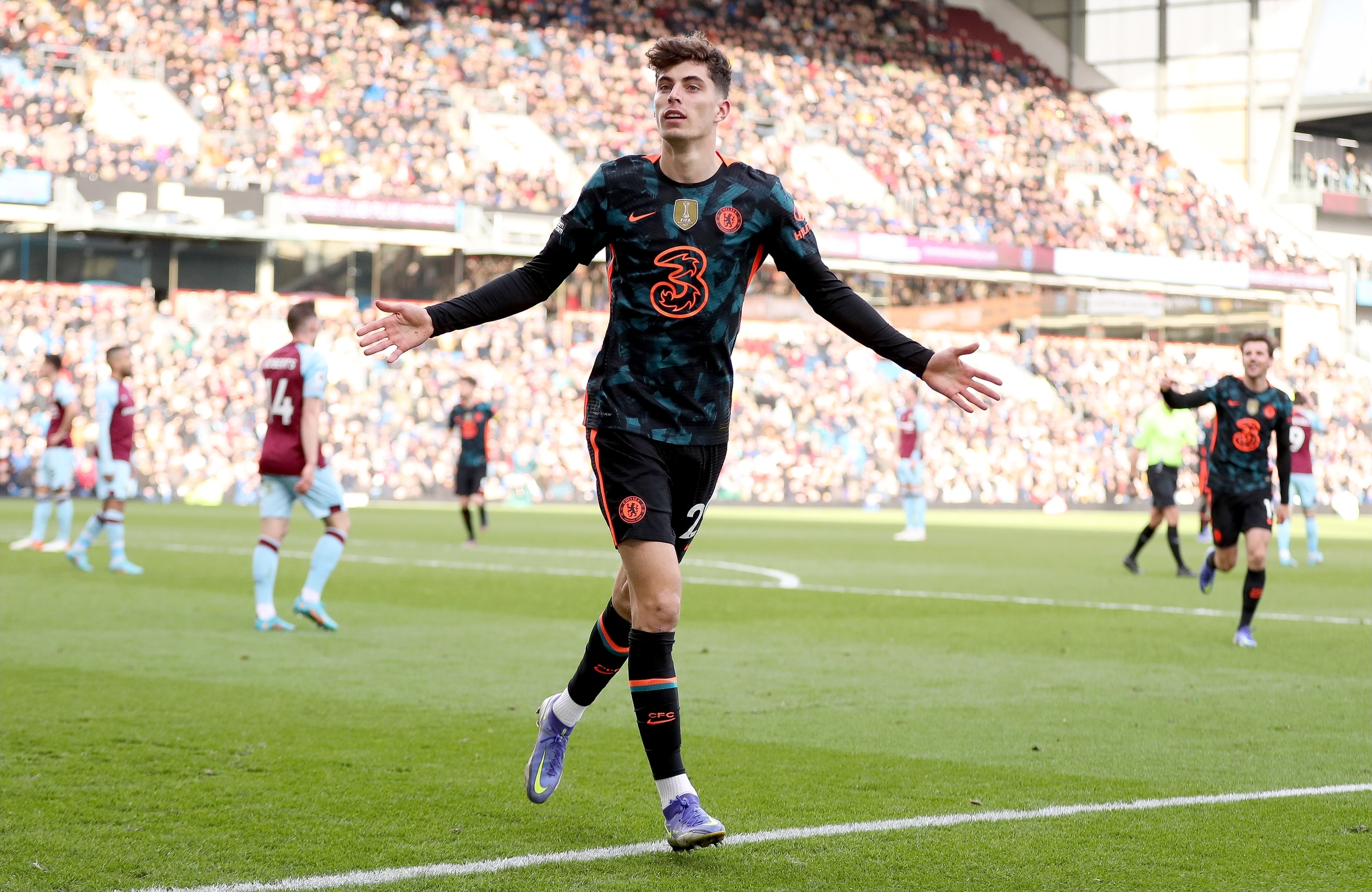
- A 1st half tactical back and forth between Burnley and Chelsea.
- How Reece James’ goal changed the game.
- How Chelsea could have improved their 1st half display.
A 1st half tactical back and forth between Burnley and Chelsea.
On Saturday, it was a matchup between Burnley’s 4-4-2 and Chelsea’s 3-4-2-1. Despite having a double-pivot on paper, Chelsea is known for implementing a 3-3-1-3 in attack, with one of their 6s (usually Kante) roaming forward (A). In response, Burnley implemented the following shape (B) which saw them create a make-shift midfield 3 within their 4-2-2, creating a 3v2 advantage in wide areas as such. This made ball progression via Chelsea’s typical wide overload difficult (C), forcing Chelsea to find an alternate way forward instead.



Due to Burnley’s compact midfield 4 in defense, space was open for the switch of play to be facilitated (D). Chelsea took advantage of this by having Mount/Pulisic drop into midfield creating a 2v1 numerical advantage over Burnley’s isolated wide midfielder (E). Here, play was swiftly switched either through diagonal long balls or a chain of short-medium passes which capitalized on this 2v1 situation. Here, Chelsea were able to progress play into Burnley’s final 3rd, enough for them to change their defensive shape.


Through recognizing this wide threat, Burnley initiated 6-2-2 low block which saw their wide midfielders cover wide positions by becoming “false” wingbacks (F). Here, no matter how quickly Chelsea switched play from side-to-side, they were completely man-marked/outnumbered in wide areas, resulting in chance creation being scarce. This was until the 2nd half, where Reece James took the responsibility of taking on Burnley’s defenders 3v1, resulting in a fantastic goal that changed the complexion of the game.

How Reece James’ goal changed the game.
When Reece James grabbed the lead for Chelsea, Burnley changed their 6-2-2 low-block to their previous 4-4-2 shape. Here, they implemented a higher press in efforts to assert themselves more in the game, even at their own peril. This change of tactics opened two spaces for Chelsea to go haywire: 1) As Burnley reverted to a 4-4-2, the same space out wide that facilitated swift switches of play in the 1st half re-opened (G), 2) As Burnley pressed higher, more space was created between the lines for play to be progressed via our wide overload (H) (space that was not allowed in the first half).


Here, Chelsea attacked via wide overloads and quick switches of play (I), resulting in a series of quick goals that sealed the win for Chelsea. A tie which Burnley was on the front foot for most of the 1st half. That being said, Chelsea only grew dominant in the game when Burnely relieved their compact 6-2-2 after Reece’s goal. This begs the question, would Chelsea have ever broken down such low-block if it wasn’t for individual brilliance? The following section suggests ways in which Chelsea can “ask more questions” if faced with a similar situation in the future.

How Chelsea could have improved their 1st half display.
Let’s begin by analyzing the 1st half in chronological order. From the beginning, when Burnley implemented their compact 4-4-2 defensive shape, Chelsea’s wide overload was completely stifled and thus, reverted to progressing play via the switch of play. This made for a very one-dimensional way of attacking which, as we saw, Burnley quickly responded to by implementing 6-2-2 low block. This begs the question, why don’t Chelsea go vertically long when there is no space for ball progression via short passes? One would argue,”It’s because none of our front 3 are target-men.”, well isn’t that the purpose of a counter-press? If Chelsea had opted to go long to Havertz, Mount/Pulisic and Kante were in close proximity, enough to form a 3v1 counter-press once the long-ball landed (J). Here, Chelsea could’ve gotten direct in-roads to Burnley’s final 3rd, facilitating chance creation as a result.

Now, onto when we actually switched play. When we switch play, it seems as if we solely attack via the flanks but do not ask questions via inverted areas. Think about a Trent Alexander-Arnold for example, when Liverpool switch the ball to him in wide midfield areas, he often sends diagonal crosses into the box, often with 2-3 runners attacking every delivery (K). I believe that this can be another dimension of our game which can ask more questions of the opposition’s defense (L). Please note, I know that Ziyech does this from the RHS, however, we need more players willing to do so on both sides of the pitch.


Lastly, when Burnely reverted to a 6-2-2, it is a shame that Chelsea did not take advantage of their sole 2 in the midfield (M). Here, Chelsea could have easily had a couple players drop between the lines to create a 3v2 advantage centrally while simultaneously keeping a wide threat (N). This puts the opposition in a predicament, eventually drawing 1-2 of Burnley’s defenders out from their back-6, creating space to be exploited as a result (O).



Where do we go from here?
Above were examples of 3 ways Chelsea could have asked alternate questions of Burnley’s defense in the first half. An aspect I really hope Chelsea can look into as, for the past couple of months, we have solely been attacking via the flanks, lacking variety becoming easily predictable.
As I always say, it just takes one team to match Chelsea’s midfield and width using a 4-5-1 low block (P), and Chelsea will have no answers on how to penetrate. When there are no answers, you have to ask more questions. This is something Chelsea do not do, and is definitely a worry for the future.

Written by: Ryan Gunness





